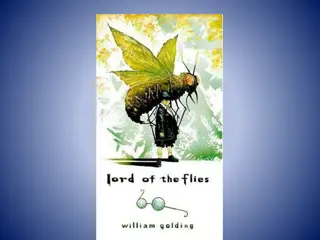An Exploration of the Ode of Mulan Themes and Symbolism
The Ode of Mulan reflects Chinese traditional values like filial piety, gender equality, and patriotism as Mulan embodies qualities of respect, love, and bravery. Symbolism in the ballad emphasizes traditional family values and Confucian ideals, while onomatopoeia is used to evoke sounds and create a vivid atmosphere. The study delves into these elements, offering insights into the deep cultural roots of the poem.
Download Presentation

Please find below an Image/Link to download the presentation.
The content on the website is provided AS IS for your information and personal use only. It may not be sold, licensed, or shared on other websites without obtaining consent from the author.If you encounter any issues during the download, it is possible that the publisher has removed the file from their server.
You are allowed to download the files provided on this website for personal or commercial use, subject to the condition that they are used lawfully. All files are the property of their respective owners.
The content on the website is provided AS IS for your information and personal use only. It may not be sold, licensed, or shared on other websites without obtaining consent from the author.
E N D
Presentation Transcript
2/10 Nithya Prakash /FACULTY/English/SNSACD
3/10 Nithya Prakash /FACULTY/English/SNSACD
4/10 Nithya Prakash /FACULTY/English/SNSACD
6/10 Nithya Prakash /FACULTY/English/SNSACD
7/10 Nithya Prakash /FACULTY/English/SNSACD
8/10 Nithya Prakash /FACULTY/English/SNSACD
Theme What is the theme of the Ode of Mulan? The Ode of Mulan also shows elements of Chinese traditional culture as Mulan has the qualities of respecting the old and loving the young. It is the expectation of Chinese society that women fulfill their filial piety. Mulan is not greedy for fame and she has optimistic and brave patriotism. 10/10 Nithya Prakash /FACULTY/English/SNSACD
Symbolism The Ballad reaffirms traditional family values and a sense of gender equality because it narrates a story of a woman being celebrated for being dutiful to her emperor and to her father, highlighting Confucian values. At the end of the Ballad, Mulan resumes her duty as a daughter. Nithya Prakash /FACULTY/English/SNSACD 11/10
Onomatopoeia Onomatopoeia is used to imitate and express the sound something makes. For instance, the ballad starts with the sound of Mulan weaving, tsiek tsiek, showing the women s pastime in early China. There are also sounds of nature like Yellow River s flowing water cry tsien tsien, or horses galloping noise tsiu tsiu . All the onomatopoeias begin with the same letters t and s, which gives a sense of Chinese words since there are many ts sounds in the language. The melody of the poem is also displayed through the implication of alliteration. Several lines start with the same words, such as you, they, no one, in the, she buys, and so on. These techniques transform the sound effects and atmosphere of the work and make it more real. Nithya Prakash /FACULTY/English/SNSACD 12
Use of imagery to convey the scenery of the battlefield and Mulans journey. The words in lines, Northern gusts carry the rattle of army pots, chilly light shines on iron armor, describe the feeling of being in the war field. There are also uses of similes, such as she crosses passes and mountains like flying, which help depict the heroine s abilities as a warrior. symbolism plays a significant role in identifying the mood and tone of the story. For example, the use of colors indicates the movement from one place to another. In the ballad, Mulan leaves the Yellow River, which stands for her home, and directs to the Black Mountains, meaning the battlefield. When she returns home from war, Mulan dabs her face in yellow powde. It signifies the arrival to her birthplace and the change of war theme to a peaceful tone. Nithya Prakash /FACULTY/English/SNSACD 14























